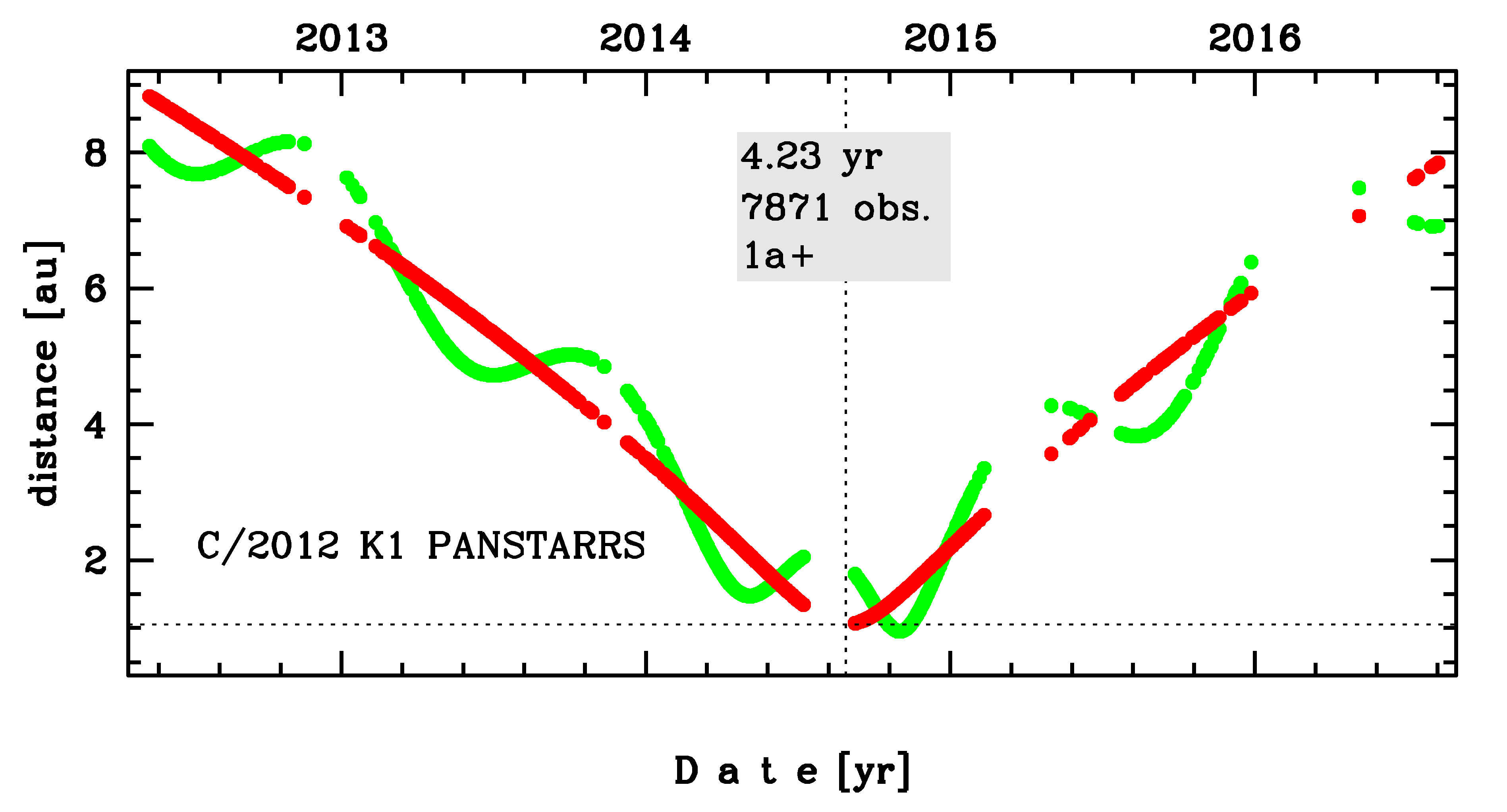C/2012 K1 PANSTARRS
more info
Comet C/2012 K1 was discovered on 19 May 2012 with Pan-STARRS 1 telescope (Haleakala), that is more than 2 years before its perihelion passage. Later a few pre-discovery images were found taken on 14 May ( MASTER-II Observatory, Tunka) and 17 May (Pan-STARRS 1). It was almost systematically observed until 7 August 2016 (see picture).
C/2012 K1 had its closest approach to the Earth on 31 October 2014 (0.953 au), about 2 months after its perihelion passage.
Preferred solution given here is based on data spanning over 4.23 yr in a range of heliocentric distances: 8.83 au – 1.055 au (perihelion) – 7.85 au.
This Oort spike comet suffers small planetary perturbations during its passage through the planetary system that cause a bit tighter future orbit (see future barycentric orbits).
See also Królikowska 2020.
C/2012 K1 had its closest approach to the Earth on 31 October 2014 (0.953 au), about 2 months after its perihelion passage.
Preferred solution given here is based on data spanning over 4.23 yr in a range of heliocentric distances: 8.83 au – 1.055 au (perihelion) – 7.85 au.
This Oort spike comet suffers small planetary perturbations during its passage through the planetary system that cause a bit tighter future orbit (see future barycentric orbits).
See also Królikowska 2020.
| solution description | ||
|---|---|---|
| number of observations | 7871 | |
| data interval | 2012 05 14 – 2016 08 07 | |
| data type | perihelion within the observation arc (FULL) | |
| data arc selection | entire data set (STD) | |
| range of heliocentric distances | 8.83 au – 1.05 au (perihelion) – 7.85 au | |
| type of model of motion | NT - non-gravitational orbits for asymmetric, standard g(r) | |
| data weighting | YES | |
| number of residuals | 15569 | |
| RMS [arcseconds] | 0.34 | |
| orbit quality class | 1a+ | |
| orbital elements (barycentric ecliptic J2000) | ||
|---|---|---|
| Epoch | 2314 06 20 | |
| perihelion date | 2014 08 27.57399841 | ± 0.00002337 |
| perihelion distance [au] | 1.05315831 | ± 0.00000054 |
| eccentricity | 0.99985020 | ± 0.00000060 |
| argument of perihelion [°] | 203.048894 | ± 0.000036 |
| ascending node [°] | 317.778910 | ± 0.000008 |
| inclination [°] | 142.429281 | ± 0.000004 |
| reciprocal semi-major axis [10-6 au-1] | 142.24 | ± 0.56 |
| file containing 5001 VCs swarm |
|---|
| 2012k1n6.bpl |

